Indoor nightshade (solanum) is beautiful all year round. In spring and summer, its bushes are strewn with small bright star-shaped flowers, which by the beginning of autumn turn into numerous balls of fruits, colored, depending on the degree of maturity, in different shades - from green, to yellow, orange and red. With all its decorativeness, this indoor flower is easy to breed and care.
Material Content:
Ideal conditions for growing nightshade
Nightshade is a tropical plant by origin, therefore it is not surprising that conditions for its development are as close to natural as possible.
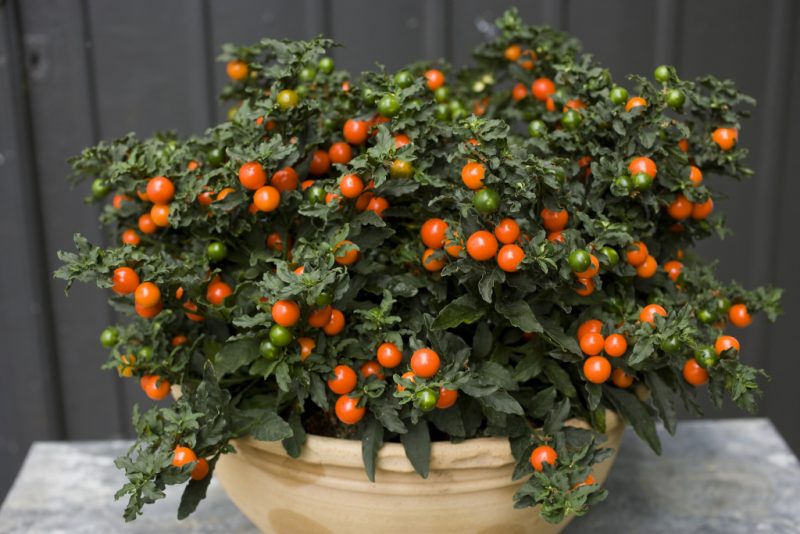
First of all, this:
- warm (in summer 18 - 25 ° C, in winter - 12 - 18 ° C), moist (65%) and fresh air, excluding the presence of drafts;
- bright but diffused light;
- soil of a certain composition.
Home Care
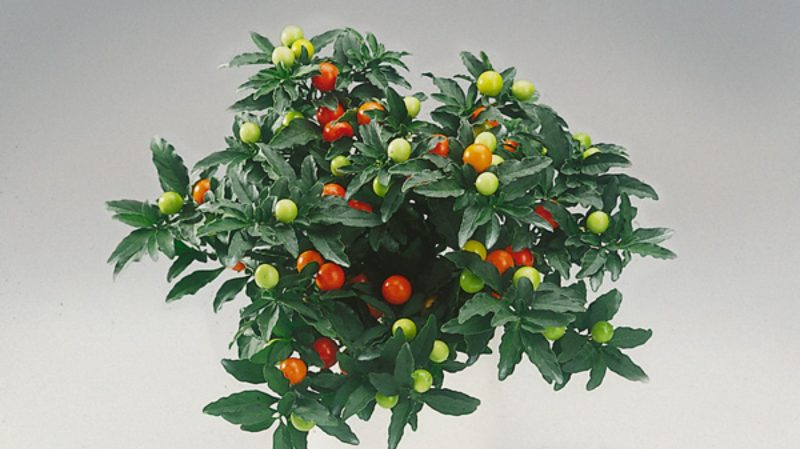
The life cycle of nightshade grown as a houseplant consists of 2 phases successively replacing each other:
- active vegetation in the spring and summer;
- a period of rest lasting all winter.
Care of the plant in each of the phases has its own characteristics.
- Watering. In spring and summer, the soil is moistened as its upper (1 - 1.5 cm) layer dries. Starting in September, watering is gradually being reduced, by October, to a minimum. An earthen lump between humidifications should completely dry. This irrigation regime is maintained until mid-February, after which the amount of moisture is gradually increased. Since March, practicing spraying shoots. On hot summer days they are carried out twice: in the morning and in the evening. For irrigation and irrigation of leaves using only settled water at room temperature.
- Top dressing.From late April to September inclusive, nightshade is fed using fertilizers for flowering forms or tomatoes in concentrations specified by the manufacturer.
- Pruning. To form a lush bush and intensify flowering, nightshade is cut several times during the season. The first pruning is carried out in the spring, in April or May, shortening the side shoots by a third of the length. The procedure is repeated in June, before flowering. In the autumn, pinch shoots without buds.
- Transfer. Young forms of nightshade are transplanted annually in the spring. Adult bushes - 1 time in 3 years. The procedure is carried out in late winter - early spring, after preliminary pruning of the plant shoots to half the height. The nightshade is transplanted by transshipment, using new, large 1.5 - 2 cm in diameter, containers with a drainage compartment and holes for water drainage. You will also need a universal purchased substrate for garden and indoor crops or an earthen mixture prepared independently from peat, turf and leaf soil, taken in equal parts. After the transplant, the flower is watered and put in a cool partial shade for 2 to 3 days.
Methods of breeding indoor nightshade
Indoor decorative nightshade propagates in 2 ways: vegetatively and by seed.
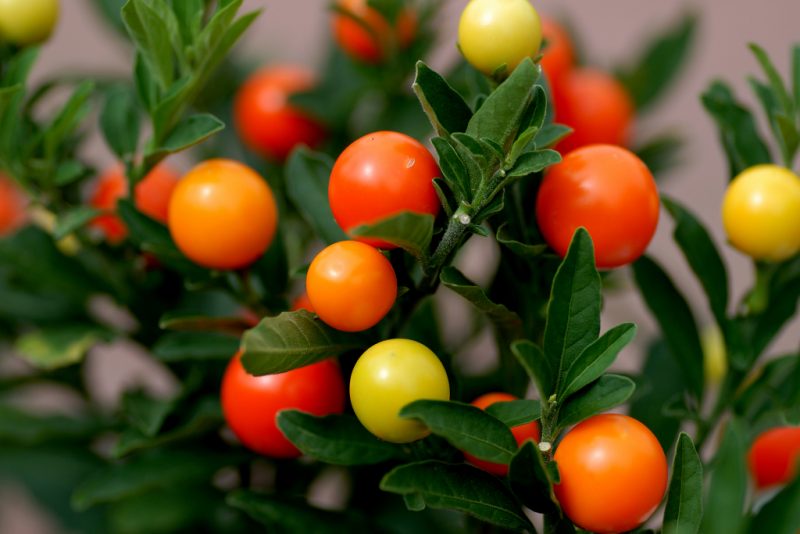
Vegetative propagation is carried out using cuttings. It is convenient to combine their harvest with spring pruning, after which shoots remain. The strongest of them are selected as cuttings.
Then:
- leaves are removed from the bottom of the cuttings, exposing the stem to 2–3 cm;
- the slice is treated with “Kornevin” - this will accelerate the formation of roots;
- rooting is carried out in settled water at room temperature or in a substrate consisting of equal parts of wet sand and peat.
Rooted plants are transplanted into separate containers of small diameter and pinched.
Propagation by seed:
- Sowing material is collected independently or purchased in specialized stores.
- Sowing is carried out in late May - early June in small-volume boxes or containers filled with sifted sheet soil. Seeds are evenly distributed over the soil surface and sprinkled with a centimeter layer of sand.
- Crops are irrigated from a spray bottle and covered with a transparent, airtight material. The containers are placed in a warm (22 - 25 ° C) and bright place.
- The first sprouts will appear in two weeks. After growing 3 sheets, the seedlings dive into separate containers. After about a month, young plants grown to a height of 10-15 cm dive repeatedly and begin to care for them as if they were adult forms.
Pest and Disease Control
Indoor nightshade leaves are attractive to sucking pests: whiteflies, orange aphids and red spider mites.

- Whitefly is a miniature midge that looks like a moth, feeds on nightshade juices, leaving behind sugary secretions and masonry larvae on the underside of leaf plates. As a result of their vital functions, the leaves curl, turn yellow and fall off. To kill an insect, the flower is treated with insecticides every 2 to 3 days.
- Orange aphid affects the tops of shoots, settling on the underside of the leaf and leading to its yellowing and drying. The insect is disposed of by spraying, which is carried out using the preparations Fitoverm, Decis, Inta-Vir until the pest is completely destroyed.
- The red spider mite settles on the lower side of the leaves, manifesting itself as the formation of small specks, which increase in size over time and merge to form spots. The acaricides Neoron, Nissoran, Fitoverm, Spark Bio in combination with moist air will help get rid of this pest.
Possible growing problems
Nightshade is unpretentious, problems in its cultivation arise only in case of non-compliance with the conditions of detention or care. The flower “expresses” its dissatisfaction with changes in appearance.
It is interesting:Scheffler at home
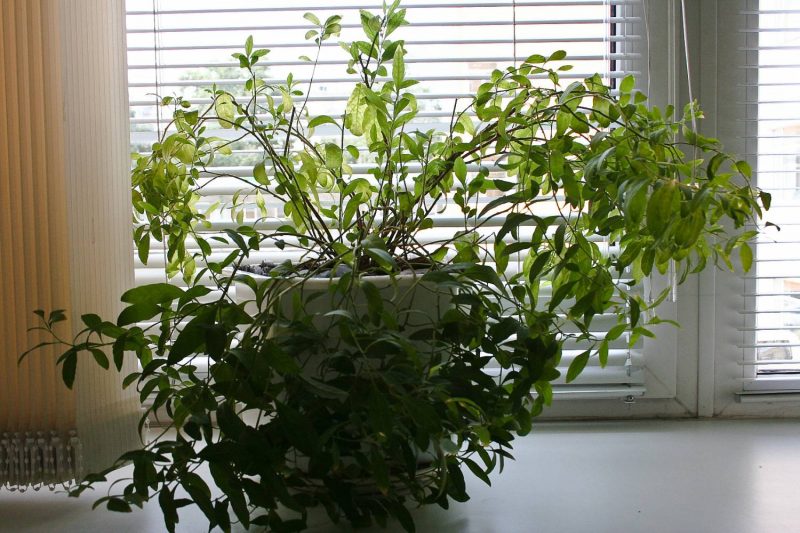
For example:
- under the influence of direct sunlight, the nightshade leaves twist, and with prolonged low light the flower completely discards the foliage;
- yellowing of the leaves and the appearance of brown spots on their surface is evidence of a nutrient deficiency, with the appearance of spotting - magnesium;
- when kept in cool, nightshade blooms poorly, which means that it bears little fruit, but in steady heat drops leaves and gets rid of berries;
- the flower reacts to excessive air dryness by yellowing, followed by drying of the foliage and a decrease in immunity.
Weakened plants are often sick and affected by pests.
As you can see, the care of decorative nightshade requires compliance with the rule of the golden mean. The flower reacts to any deviation from the norm by loss of decorativeness.
Poison and healing properties of the flower
As a houseplant, 2 species of nightshade are grown: pepper-shaped and pseudo-transverse. Outwardly, they are difficult to distinguish. The fruits of one species are edible, while the other is poisonous and dangerous in that they are very attractive in appearance. It is difficult to resist, especially for children, so as not to rip them off and taste. This should not be forgotten when choosing a room flower, especially if the family has children.
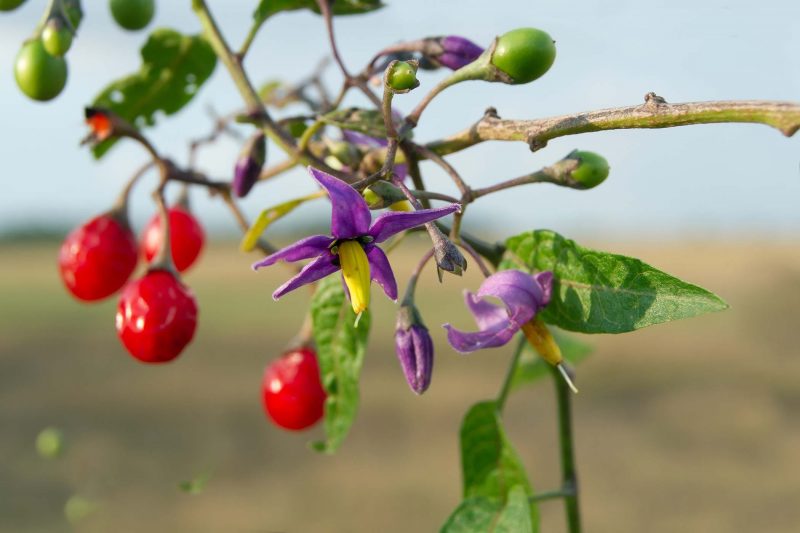
Edible fruits, as well as leaves and flowers of decorative nightshade are used in folk medicine:
- ripe (dark red) fruits are dried and prepared from them decoctions and infusions that treat tonsillitis;
- crushed raw berries of edible nightshade are mixed with honey or sugar and used in the treatment of headaches and epilepsy;
- decoctions of flowers are used in the treatment of diseases of the upper respiratory tract and lungs;
- dry nightshade leaves are an excellent wound healing agent; ointments and triturations are prepared on their basis, which contribute to the resorption of swelling, accelerate the process of maturation of abscesses and relieve inflammation.
The spectacular appearance of the flower, combined with unpretentiousness contributed to the growth of the nightshade popularity. Knowledge of the features of growing this indoor flower, attention and reasonable care allow cultivating this beautiful and original plant at home.












